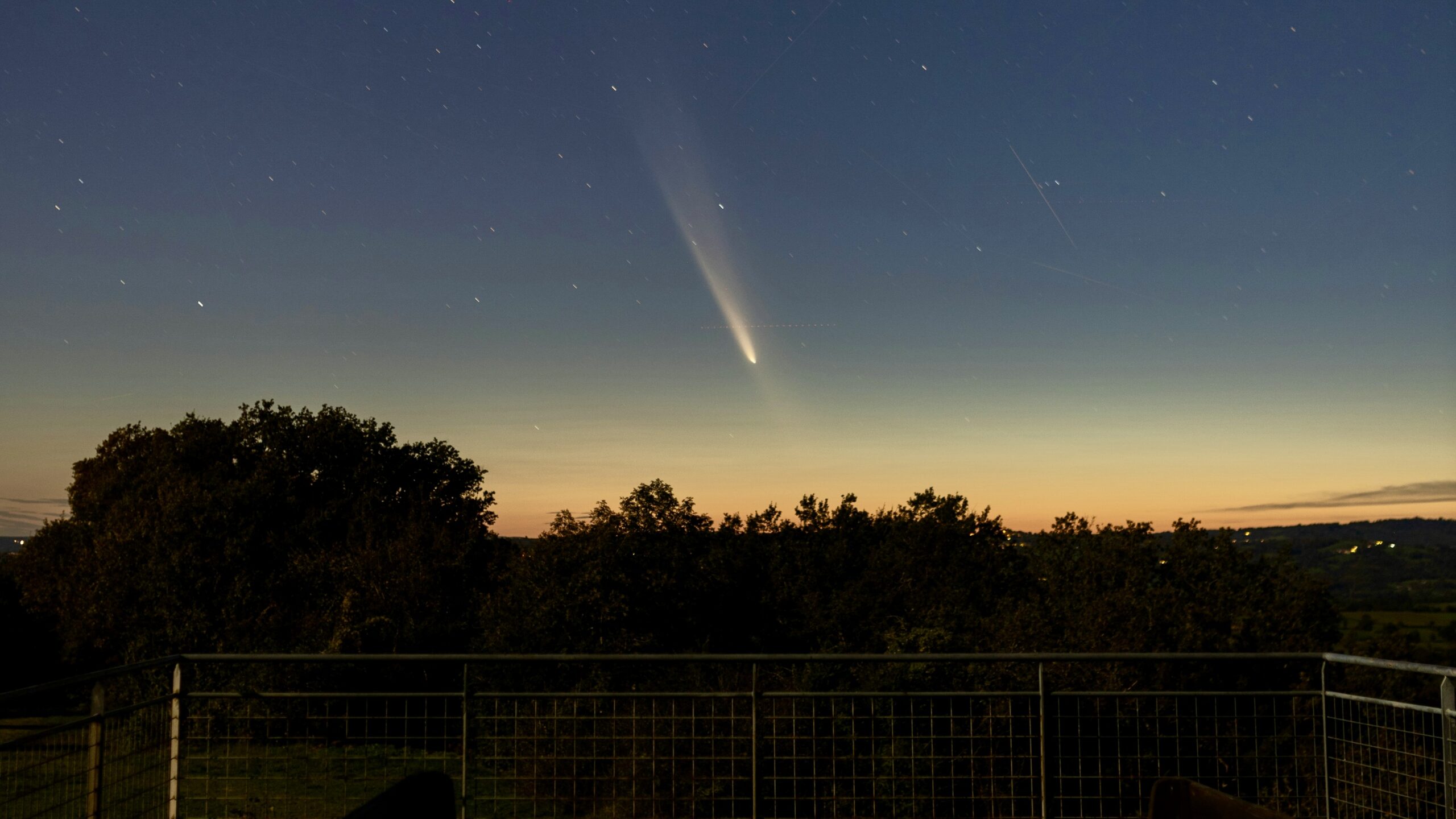Science
Comet 3I/ATLAS Approaches Sun, Offering Unique Insights

A remarkable celestial event is imminent as comet 3I/ATLAS prepares for its closest approach to the Sun on October 30, 2023. This interstellar visitor will reach perihelion, the point where it is nearest to the Sun, expected to exhibit heightened activity. While the comet’s approach promises to be a spectacular show, observers on Earth will not be able to witness it due to its position behind the Sun, obscured by its intense glare.
Fortunately, several robotic missions throughout the solar system are well-positioned to monitor this significant event. The perihelion of 3I/ATLAS will occur at a distance of 1.35 astronomical units (approximately 125 million miles or 202 million kilometers) from the Sun. Unlike planets that orbit the Sun, this comet is merely passing through, but its close proximity to the Sun will trigger substantial changes. The intense solar heat will cause ice on the comet’s surface to sublime, creating a glowing coma and likely producing two distinct tails—one of gas and another of dust propelled by solar winds.
While Earth-based observers will miss the comet’s peak activity, robotic explorers, including missions at Mars, will have a clear view of the event. These spacecraft had front-row seats during the comet’s close encounter with the Red Planet on October 3, 2023, when it passed just 0.19 AU (about 17.6 million miles or 28.4 million kilometers) away. Other missions, such as NASA’s Psyche and Lucy, heading towards asteroids, will also be able to observe the perihelion. The European Space Agency’s JUICE probe, after completing a flyby of Venus, is also in the vicinity but is currently using its primary antenna as a sun shield, delaying data transmission until February 2024.
Researchers are particularly interested in the chemical composition of 3I/ATLAS. The gas and dust released during its outgassing process offer direct samples of its makeup, providing insights into the star system where it originated over seven billion years ago. Early analyses reveal that this comet contains more carbon dioxide than typical solar system comets and has an unusually high abundance of nickel. These findings allow astronomers to compare the chemistry of our solar system to that of the comet’s distant home.
As 3I/ATLAS continues its journey, scientists are closely monitoring its activity. The peak of its activity is expected at perihelion, with hopes of discovering new molecules. Of particular interest is the potential for iron emissions, which have not yet been detected. Once the comet re-emerges from behind the Sun in late November, it may still exhibit significant activity, although its distance from Earth will likely render it faint, with a predicted magnitude of 12. This brightness will make it difficult for amateur astronomers to observe but accessible to advanced astro-imagers and powerful telescopes like those operated by Hubble and James Webb.
This event underscores the importance of space exploration and the role of robotic missions in advancing our understanding of celestial phenomena. As 3I/ATLAS approaches the Sun, it not only captivates astronomers but also serves as a bridge between our solar system and the broader universe.
-

 Health3 months ago
Health3 months agoNeurologist Warns Excessive Use of Supplements Can Harm Brain
-

 Health4 months ago
Health4 months agoFiona Phillips’ Husband Shares Heartfelt Update on Her Alzheimer’s Journey
-

 Science2 months ago
Science2 months agoBrian Cox Addresses Claims of Alien Probe in 3I/ATLAS Discovery
-

 Science2 months ago
Science2 months agoNASA Investigates Unusual Comet 3I/ATLAS; New Findings Emerge
-

 Science2 months ago
Science2 months agoScientists Examine 3I/ATLAS: Alien Artifact or Cosmic Oddity?
-

 Entertainment2 months ago
Entertainment2 months agoLewis Cope Addresses Accusations of Dance Training Advantage
-

 Entertainment5 months ago
Entertainment5 months agoKerry Katona Discusses Future Baby Plans and Brian McFadden’s Wedding
-

 Science2 months ago
Science2 months agoNASA Investigates Speedy Object 3I/ATLAS, Sparking Speculation
-

 Entertainment5 months ago
Entertainment5 months agoEmmerdale Faces Tension as Dylan and April’s Lives Hang in the Balance
-

 Entertainment2 days ago
Entertainment2 days agoAndrew Pierce Confirms Departure from ITV’s Good Morning Britain
-

 World3 months ago
World3 months agoCole Palmer’s Cryptic Message to Kobbie Mainoo Following Loan Talks
-

 World4 weeks ago
World4 weeks agoBailey and Rebecca Announce Heartbreaking Split After MAFS Reunion









